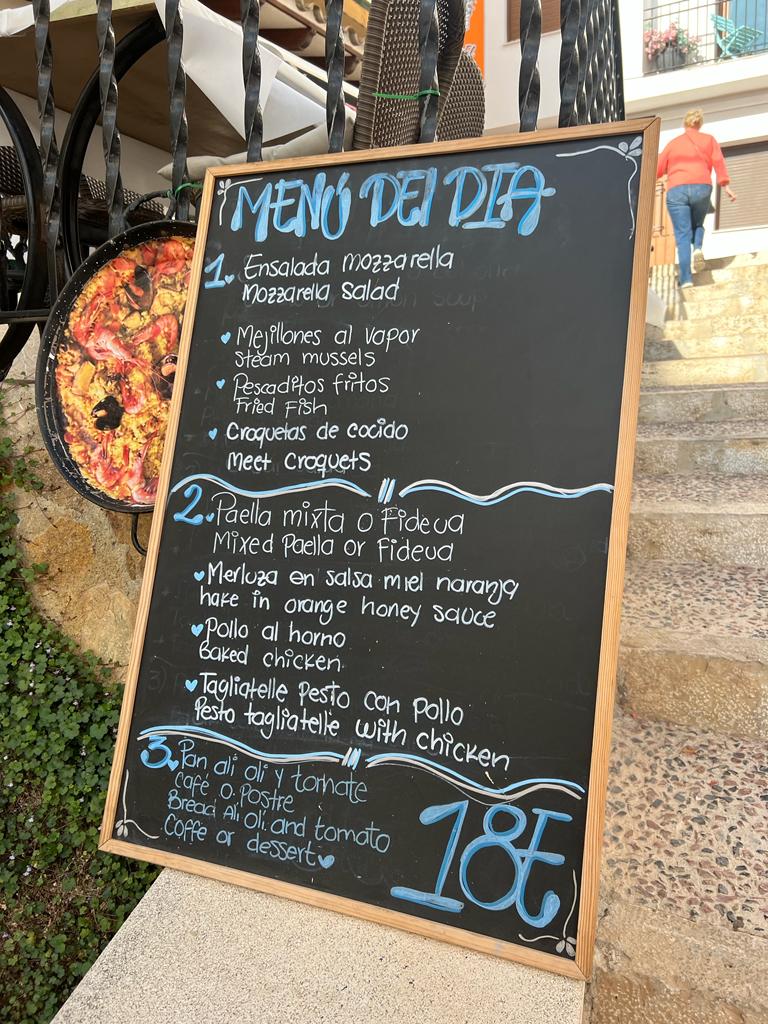DCB made a visit to the charming Spanish coastal town of Moraira on the 3rd of January 2024 and we would like to share the experience with you.

Moraira is a town on the coast of Costa Blanca belonging to the municipality of Teulada in the province of Alicante, Valencian Community and is an important international tourist center.

The monument above is a popular tourist attraction and “Gigante de la Sal” which translates to “Gigant of the salt”. It was initially erected in La Marina, south of Alicante and after a year moved to Moraira where it now stands.
The sculpture is made by the artistic duo, Coderch and Malavia, inspired by the Butoh dance performance of Fred Herrera. The Japanese dance dates back to the years after World War II and symbols strength of humans to be reborn after great catastrophes such as the Hiroshima bomb.

For lunch we chose to try an old traditional Spanish restaurant called “Meson el Pou”. It has a tranquil location by the castle in the heart of Moraira. Here you can enjoy traditional Spanish food and italian cuisine in a great, traditional atmosphere without disturbing noise.

The prices and quality of the food was very much to our liking so this is definitely a restaurant worth visiting if you have the opportunity to visit Moraira.


A bit of history about Moraira!
The Moraira region has a rich history of human habitation dating back to prehistoric times. The Cova de la Cendra archaeological site on Cap d’Or, situated near the town, has yielded artifacts indicating human presence during the Upper Paleolithic era. Additionally, discoveries of pottery linked to the Iberians on Cal d’Or suggest their later occupation of the area in the Bronze Age.
After the Umayyad conquest of Hispania, the region was settled by the Moors, and their cultural influence is still evident in the local architecture and municipal layouts. Many place names in the Teulada-Moraira area, such as Alcassar, Benimeit, Benimarco, Moravit, Pouet del Morro, and Tabaira, are derived from the Moorish settlement. According to local legend, Moraira may have been named after the Moorish princess Ira, la Mora.
During the Reconquista, Jaime I de Aragón expelled the Moors, integrating the area into the Kingdom of Aragon between 1270 and 1280. This historical event is commemorated annually during the Moros y cristianos festival. Subsequently, Christian settlers from Catalonia and Aragon replaced the Moors, introducing the Valencian language to the region. In 1386, Teulada was founded five kilometers inland from the coast by the Lords of Lluria, Serria, and Grandia, eventually becoming an independent municipality.

The weather on the day of our visit was ideal offering 21 degrees and clear skies on this beautiful winter day.
Thank you for reading this blog post by Destination Costa Blanca!


No responses yet